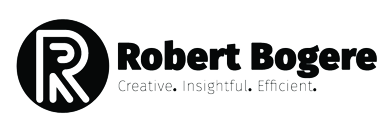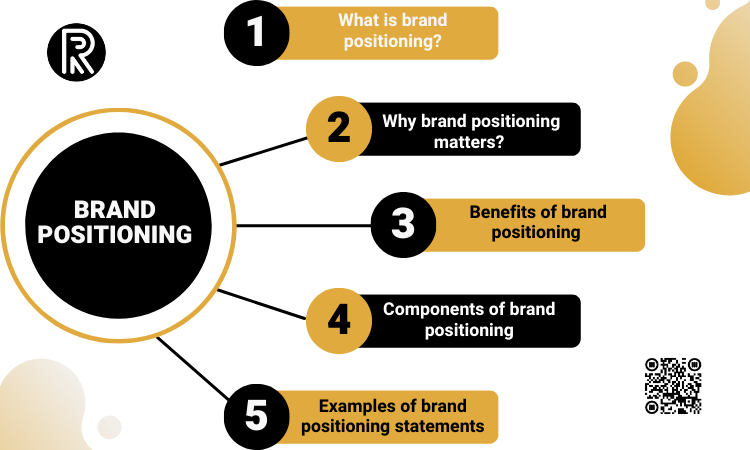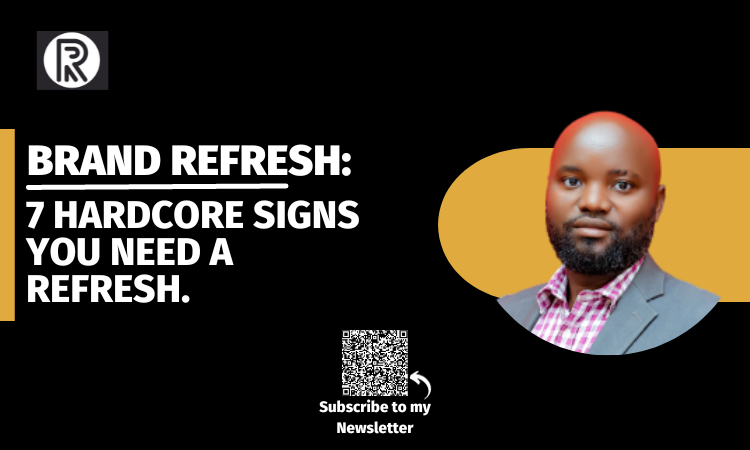Last Updated on Fri-Mar-2024 by Robert Bogere
When I think of prominent brands, I can’t fail to mention Coca-Cola, Volvo, Toyota, Pepsi, Mercedes Benz, and many others. Why? Because I’ve grown up seeing such brands being used by many people I know and don’t know.
Until I studied advanced marketing and noticed the difference with such brands is they mastered the art of brand positioning because of how easily they’re known which is yet the case with start-ups and some SMEs.
Of course, such are very few of the World’s most prominent brands with an ultimate brand value.
But, since tomorrow starts tonight, today your brand has a chance to start working on its brand positioning and identify its competitive advantage. Think of it now!
- What is brand positioning?
- Why is brand positioning so important?
- Benefits of brand positioning?
- Elements of a brand positioning statement
- How to trigger your prospects to believe in your communication?
- Brand positioning statement approaches
- Examples of brand positioning statements
- What’s Coca-Cola’s brand positioning?
- Why it’s a good positioning statement?
- Where do we come in?
- Implementing your brand positioning
- Brand Positioning Statement Conclusion
What is brand positioning?
Brand positioning refers to the unique value that a brand presents to its customers — Amazon Ads
The above is a marketing strategy brands develop to establish their brand identity while conveying their value proposition. It’s was introduced in 1969 and made famous by Jack Trout of Ries and Trout.
Developing your brand positioning strategy can only be done after having run your market segmentation and outlined targeting.
It’s about making sure that your target audience knows why they should select your brand over other market leaders.
Why is brand positioning so important?
- Its importance is to make sure companies like yours communicate the value they offer to their customers.
- It helps you to separate yourself apart from your direct and indirect competitors, and showcase your values and brand ethos.
- It also helps in aligning your messaging strategy
- Lastly, it helps your brand to leverage its unique benefits and take control of its reputation and how your company is perceived.
Striking the right balance between centrality and distinctiveness is critical because a company’s choices influence not just how the brand will be perceived, but how much of it will be sold and at what price and ultimately how profitable it will be
– Havard Business Review
Benefits of brand positioning?
Forbes pinpointed four (4) main benefits as below;
- Increased sales
- Brand recall
- Emotional appeal
- Improved customer loyalty
Also, you may need to learn how to carry out your brand audit
Elements of a brand positioning statement
Having learned what brand positioning is, its importance, and its benefits, let’s tap into what to consider in developing it. In brief, list down the vital needs of your target audience segments.
- Point out your brand’s differentiation points — competitive merits
- State your positioning strategy based on your customer needs
- Identify your competitors and their positioning attributes
- Craft your brand positioning statement
- Evaluate and test if it performs well

Before you start the process, it’s better to know your brand in and out. The best method is; to assume your brand is a person — what’s its uniqueness? What quality attributes does it have?
Consider consumer perceptions — How is your brand perceived by your target audience? What qualities are they searching for in a company? How can you demonstrate such to your customers?
The importance of rendering your valuable time to craft your brand positioning is allowing your brand to develop and grow. Start with stating your brand as a person — give it a name, and mention its personality, vision, mission, and perception.
1. Developing your brand essence
To develop your brand essence, put in your mind those special attributes they will think about your brand. What benefits will your target audience receive from your brand?
Brand essence is about the feelings and emotions that people will get when they think about your brand.
2. Point out emotional and functional benefits
Without knowing what kind of benefits your brand provides to your target audience, you’re more likely to fail to properly position your brand. As I said, the best angle is to think of what your customers will expect when using your products.
Quick question: Does your product or service help your customers improve their writing skills? Or does it help them reduce operation costs?
What of the feelings after using your products or services? For instance, if Volvo customers are assured of safety and the ones of Land Rover are ready for adventures, what feelings do your customers have toward your products or services? The key is to focus on the target customers and their insights into the brand.
3. Identify the reasons to believe
What are those special reasons to believe in your stuff? Think of why consumers would trust the brand values you’re communicating to them.
How to trigger your prospects to believe in your communication?
- Identify the top main differentiation points — functional and emotional
- Develop the tactics that better communicate your brand perception — like Nike. It uses celebrities and real-life people in their stories so that all people can “Just do It” regardless of their backgrounds
Discover: Brand strategy refresh indicators here
There are many approaches you can use to develop a brand positioning statement for your brand whatever its size, vision, mission, and segments.
The method of pointing out product characteristics and features is far from developing your brand positioning statement — brand positioning is about consumer perceptions and taking control of the narrative consumers have toward your company.
Brand positioning statement approaches
- Positioning map
- Brand positioning framework
- Brand positioning template format
1. Positioning map
A brand positioning map gives a clear visual representation of the crucial aspects of your brand efforts and where you currently stand as a brand in delivering your attributes to your target audience than your competitors
Draw your map having two axis — X and Y. Have the brand weaknesses and strengths on the (X) and then important and unimportant attributes on (Y)
To position your brand better, compare your brand with its market leaders. For instance, if brand A provides on-time delivery twice your brand, place that attributes above or higher on the side of competitors. Do the same with other attributes.
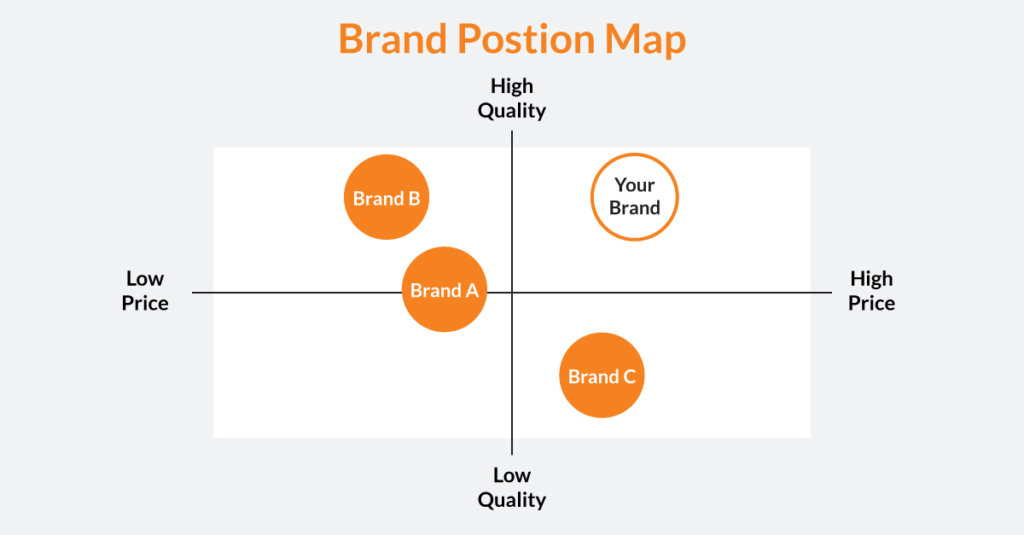
2. Positioning framework
You can also utilize a positioning framework to visually highlight your brand identity across key areas.
Having a well-developed framework, your brand can tell customers why you’re a part from its competitors.
It’s great for sharing this in presentations when getting your company’s buy-in. Refer to an example of the Smart Insights framework.

3. Brand positioning statement format
Brand positioning statement defines how your brand shows up in the market. Of course, there’re many formats you can use. Graham Robertson agitates you to work with on only four (4) elements to craft a better positioning statement.
This is something you can do on your own though you can also hire specialists like us to craft a meaningful statement.
- Target audience – Who are your target audience
- Category – Where do you serve?
- Benefits – What’s your promise? Think of the benefits customers will be getting from your products or services
- Support points (evidence or proof) – How will your target audience believe you?

Examples of brand positioning statements
There quite numerous examples, but now let’s look at a few from prominent brands. Let’s start with mine of course
1. Dove
Through its personal care products, it positions itself apart by focusing on the natural and real beauty of women.

Their positioning strategy emphasizes the way all women can embrace their authentic selves through the use of their products.
2. Nike
Its brand positioning is focused on the idea of empowering individuals to chase their full potential through sports and physical activity.

For athletes in need of high-quality, fashionable athletic wear, Nike provides its customers with top-performing sports apparel.
Refer to Nike’s marketing campaigns – they often feature professionals and amateur athletes pushing themselves to the limits and emphasizing the mental and physical benefits of being active.
3. Coca-Cola
Its brand positioning is developed around the concept of rendering positive, uplifting experiences through their products.
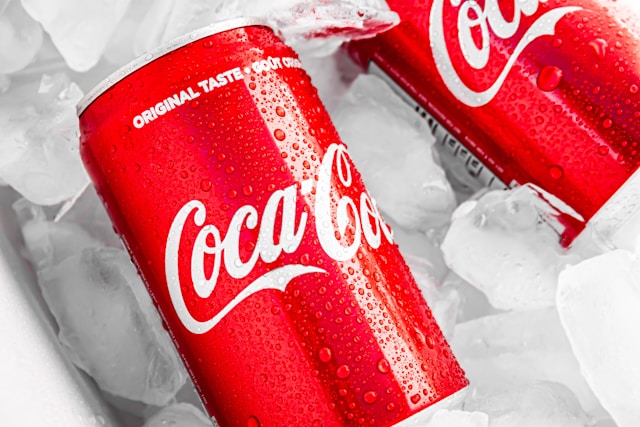
Their brand positioning – is for people who want a refreshing and uplifting beverage choice. Coca-Cola leads the soft drink space with its iconic and classic products.
What’s Coca-Cola’s brand positioning?
For people who want a refreshing and uplifting beverage choice
4. McDonald’s
Through its foodstuff, it’s positioning itself by promoting its customers both exceptional service and consistency among its food products across its many products.

Bonus brand:
Robert Bogere
I’m Robert Bogere. I help start-ups and SMEs to know their brand gaps based on insights and research so they can improve their brands to stand out. Start-ups and SMEs face brand challenges at start, expansion, and growth stages.
They need the support of focused, creative, and insightful brand strategists who can help them stay competitive and avoid loopholes along their journey.
Why it’s a good positioning statement?
Robert Bogere is a brand and communications strategist. To be relevant in the market, it’s vital to know and clearly communicate the brand niche and target audience.
The statement makes the brand strategy focus clear. It explains how to get time to work on such strategy is time consuming on the side of the business owners and how my skills can help keep my clients competitive in the marketplace.
That’s a brand promise that clearly brings out a unique benefit to such brands.
Where do we come in?
With my extensive brand strategy knowledge, I’m well positioned to give in time and craft or develop a unique brand positioning statement that resonates to your market you serve and focus on the gaps in the market.
If you want to benefit from such extensive expertise, don’t hesitate to book my 1:1 free strategy hour. Press the button below for more details.
Since time is money, you need to concentrate on serving your customers as I focus on developing a statement which will help your team to communicate your messages to your target audience.
Implementing your brand positioning
Well, thanks for managing to develop your brand positioning statement. Now start to roll out its implementation across all your brand touch points.
Put in mind updating your social media bios and website about us pages. Try to be consistent across all channels to develop an effective brand positioning.
Remember it’s not an overnight process. This is a long-term tactic. For multinationals, it’s worth drafting an annual brand strategy.
Reviewing and implementation phase should always be an ongoing process of your brand strategy.
Brand Positioning Statement Conclusion
Brand positioning is a vital strategy of your company’s marketing strategy that helps to set your brand apart from its competitors.
Putting your target audience, what they value, and knowing the market gaps is paramount for developing an ultimate brand positioning statement.
By noticing their needs and wants, you’re able to craft campaigns, and messages audience and differentiate your brand that stands out in a crowded market.
If you have challenges to your brand’s differentiation against your competitors, how will your target audience supposed to know?
